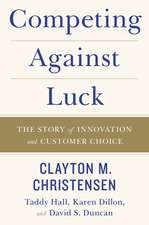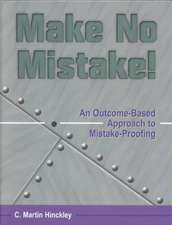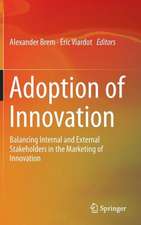Model-Driven Risk Analysis: The CORAS Approach
Autor Mass Soldal Lund, Bjørnar Solhaug, Ketil Stølenen Limba Engleză Paperback – 14 noi 2014
| Toate formatele și edițiile | Preț | Express |
|---|---|---|
| Paperback (1) | 398.53 lei 6-8 săpt. | |
| Springer Berlin, Heidelberg – 14 noi 2014 | 398.53 lei 6-8 săpt. | |
| Hardback (1) | 398.92 lei 6-8 săpt. | |
| Springer Berlin, Heidelberg – 21 oct 2010 | 398.92 lei 6-8 săpt. |
Preț: 398.53 lei
Nou
Puncte Express: 598
Preț estimativ în valută:
76.26€ • 79.78$ • 63.35£
76.26€ • 79.78$ • 63.35£
Carte tipărită la comandă
Livrare economică 03-17 aprilie
Preluare comenzi: 021 569.72.76
Specificații
ISBN-13: 9783642447013
ISBN-10: 3642447015
Pagini: 476
Ilustrații: XVI, 460 p.
Dimensiuni: 155 x 235 x 25 mm
Greutate: 0.66 kg
Ediția:2011
Editura: Springer Berlin, Heidelberg
Colecția Springer
Locul publicării:Berlin, Heidelberg, Germany
ISBN-10: 3642447015
Pagini: 476
Ilustrații: XVI, 460 p.
Dimensiuni: 155 x 235 x 25 mm
Greutate: 0.66 kg
Ediția:2011
Editura: Springer Berlin, Heidelberg
Colecția Springer
Locul publicării:Berlin, Heidelberg, Germany
Public țintă
ResearchCuprins
Part I: Introductory Overview1) Introduction - 2) Background and Related Work - 3) A Guided Tour to the CORAS MethodPart II: Core Approach4) The CORAS Risk Modeling Language - 5) Preparations for the Analysis - 6) Customer Presentation of Target - 7) Refining the Target Description Using Asset Diagrams - 8) Approval of Target Description - 9) Risk Identification Using Threa Diagrams - 10) Risk Estimation Using Risk Diagrams - 11) Risk Evaluation Using Risk Evaluation Diagrams - 12) Risk Treatment Using Treatment DiagramsPart III: Selected Issues13) Analysing Likelihood Using CORAS Diagrams - 14) The High-Level CORAS Language - 15) Using CORAS to Support Change Management - 16) The Dependent CORAS Language - 17) Using CORAS to Analyse Legal Aspects - 18) The CORAS ToolPart IV: AppendicesA) CORAS Language Grammar - B) CORAS Language Semantics - C) CORAS Guidelines
Recenzii
"The book is quite well organized [...]. Graduate students and researchers unfamiliar with risk assessment techniques and risk management issues will find [it] illuminating." ACM Computing Reviews, Sandeep Shukla, June 2012
Notă biografică
Ketil Stølen is Chief Scientist at SINTEF ICT, Oslo, Norway, where he leads the Group for Quality and Security Technology at the Department for Cooperative and Trusted Systems. Mass Soldal Lund is a researcher this group, specialising on risk analysis and thread modeling. Bjørnar Solhaug is a PhD student at the Department of Information Science and Media Studies, University of Bergen, Norway, and SINTEF ICT, working on formal languages for the specification of trust management policies.
Textul de pe ultima copertă
The term “risk” is known from many fields, and we are used to references to contractual risk, economic risk, operational risk, legal risk, security risk, and so forth. We conduct risk analysis, using either offensive or defensive approaches to identify and assess risk. Offensive approaches are concerned with balancing potential gain against risk of investment loss, while defensive approaches are concerned with protecting assets that already exist.In this book, Lund, Solhaug and Stølen focus on defensive risk analysis, and more explicitly on a particular approach called CORAS. CORAS is a model-driven method for defensive risk analysis featuring a tool-supported modelling language specially designed to model risks. Their book serves as an introduction to risk analysis in general, including the central concepts and notions in risk analysis and their relations. The authors’ aim is to support risk analysts in conducting structured and stepwise risk analysis. To this end, the book is divided into three main parts. Part I of the book introduces and demonstrates the central concepts and notation used in CORAS, and is largely example-driven. Part II gives a thorough description of the CORAS method and modelling language. After having completed this part of the book, the reader should know enough to use the method in practice. Finally, Part III addresses issues that require special attention and treatment, but still are often encountered in real-life risk analysis and for which CORAS offers helpful advice and assistance. This part also includes a short presentation of the CORAS tool support.The main target groups of the book are IT practitioners and students at graduate or undergraduate level. They will appreciate a concise introduction into the emerging field of risk analysis, supported by a sound methodology, and completed with numerous examples and detailed guidelines.
Caracteristici
Concise introduction into risk analysis Presentation of the only model-based risk modelling method and language, CORAS With numerous examples and detailed guidelines for structured and stepwise risk analysis Includes supplementary material: sn.pub/extras













